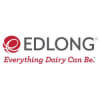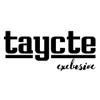Food and beverage startups are a commodity that major manufacturers crave but can't always purchase. With established brands seeing softer sales, larger companies are scrambling to acquire fast-growing competitors.
As a result, 2015 was a massive, record-breaking year for mergers and acquisitions in the consumer goods space, particularly food and beverage, according to a recent Mergermarket report. The food subsector alone saw a 57.8% increase over 2014 for a total of $120.8 billion in M&A deals last year.
Manufacturers, private equity firms, and venture capitalists recognize the growth potential of food and beverage companies. However, fewer of these fast-growing companies are looking to sell than there are interested buyers, according to Bloomberg. With more buyers to choose from, acquisition targets can be more selective in which company they sign a deal with. Manufacturers are finding ways to stand out in a crowded acquisition-friendly environment by improving their deal origination points, developing relationships with promising targets, and adding value to their deals.
What the numbers say
The consumer sector topped its previous record by announcing $516.5 billion worth of deals, a 54.7% jump over the total value of 2014's M&A transactions. Deal count fell slightly, though that doesn't necessarily signal a downward trend in consumer M&A, according to Anthony Valentino, deputy editor at Mergermarket. A few "mega deals" bolstered the total deal value for the year, he said, and that inflated the record total.

These mega deals namely included the $46 billion merger of Kraft Foods Group and H.J. Heinz to form Kraft Heinz, and the announced $107 billion merger of Anheuser-Busch InBev and SABMiller, which is waiting on regulatory approval. The latter merger contributed to the "Other" segment, which includes beverages in addition to personal care and household goods and totaled $216.8 billion last year, soaring by 65% over 2014.
For this year, Valentino says the total deal value will decline "no matter what," but that it's not an indicator of a broader market slowdown for M&A. Instead, the deal count will likely stay in the same range that it has over the last couple of years. The industry will see fewer mega deals while middle market companies remain consistently active in acquisitions.
Innovation and fast growth propel the middle market
Many large cap deal opportunities have been exhausted, but the middle market has a large number of innovative companies with high growth that appeal to investors of all types, Valentino said. Strategics and private equity firms have been the primary drivers of acquisitions in the past. Active PE firms in the food and beverage space have included Alliance Consumer Growth, Kainos Capital, TSG Consumer Partners, and JAB Holding Co, which announced its acquisition of Keurig Green Mountain in December.
But now more food and beverage-focused venture capital firms, such as Edible Ventures and CAVU Venture Partners, and manufacturer-backed VC efforts, including General Mills' 301 Inc. and Campbell's Acre Venture Partners, are entering the investment circle and making the buying market more competitive.
The potential for innovation and high growth is what makes food and beverage companies stand out in the consumer sector, which is why more investors are becoming interested in the industry.
"Food and beverage [is] a lot more ripe for innovation, and you can get those really unique, high-growth companies, whereas there's not as many ways to reinvent the restaurant or retail experience," said Valentino.
Valentino stresses that acquisition activity will come not only from on-trend food types but also consumer demographics, particularly food and beverage companies that target the fast-growing Hispanic population. Valentino said that private equity firms have already been active in the Hispanic products space, but "there's also been talk" about manufacturers stepping further into this market.
In October, Mars announced that it would acquire Mexican candy maker Grupo Turin, and a Tyson Foods subsidiary acquired Don Julio Foods in 2013. Earlier this year, Teasdale Foods purchased Bruce Foods Corp., producer of Mexican food brands including Casa Fiesta.
It's all about added value and deal origination
Middle market companies don't always need the capital, so with so many choices for investors, companies don't always strike a deal with the higher bidder, Valentino said. Now companies are looking for the value an acquiring company can bring beyond just a capital investment, such as opportunities for expanded distribution, insider tips, and industry relationships. Here, manufacturers tend to stand above private equity firms.
To understand the best way to provide value to a particular company, manufacturers develop relationships with the company before offering a deal. Here, deal origination is key.
"The due diligence and deal origination period is so critical, and doing it earlier and earlier now is very important," Valentino said. "… It's been a traditional part of the process for a long, long time, but there has never been a time where it's been more critical just because of the massive interest that's there. There's 10 other guys looking at this asset two years in advance too."
But at the same time, manufacturers are balancing an acquisition target's potential with assumed risk. The sooner a manufacturer can acquire a company, the lower a price point or multiple it might pay. But no matter how much potential a company has, success is never a guarantee. Energy and sports drink producer Golazo learned this firsthand when it had to shut down production last year after several years of successful expansion.
Many startups struggle with capital investment and cash flow, but manufacturers that bring more to the deal will have a better chance at closing. That may mean agreeing to allow the startup to retain most of its independence, as General Mills has done with Annie's. By doing due diligence to minimize purchase risk, manufacturers can be confident about including such a provision to make their offer more attractive. This way, manufacturers can stand out among competing buyers as the food industry remains steadily acquisitive in the coming year.





















